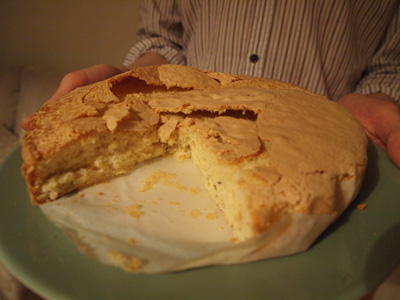Whoever Mrs Townley was, she certainly knew how to bake! This cake recipe produces a light, fatless sponge with lovely fresh notes of lemon and caraway seed.
The original recipe makes a lot of batter, so we halved the quantities of flour, grated lemon rind and sugar, and reduced the number of eggs to five. We also toned down the caraway flavour, adding just a couple of teaspoons of the seeds.

Mrs Townley’s 18th century recipe for a light sponge with lemon and caraway cake, from The Cookbook of Unknown Ladies.
Mrs Townleys Cake
A pd of sugar, dryed, pounded & sifted, half a pd of flower, 12 eggs, half ye whites. The yolks & whites beat seperately. Put the sugar to yr yolks, beat them till as white as cream. Then, put in the whites by degrees. As the froth rises, great in the rinds of 4 lemons, an ounce of carray seeds. Then put in yr flower. All together mix it well. Butter yr pan. An hour bakes it.
And if you’re feeling fancy, here’s a recipe for icing your cake… There’s no call for special palette knives for piping bags: a simple feather does the trick!
Icing for a Cake
Beat the whites of 2 eggs. Beat to a froth, then have some dubble refind sugar sifted. Take a feather, & when yr cake is bak’d, daub it over with the egg. Then sift it thick with the sugar & set in the oven to dry.



